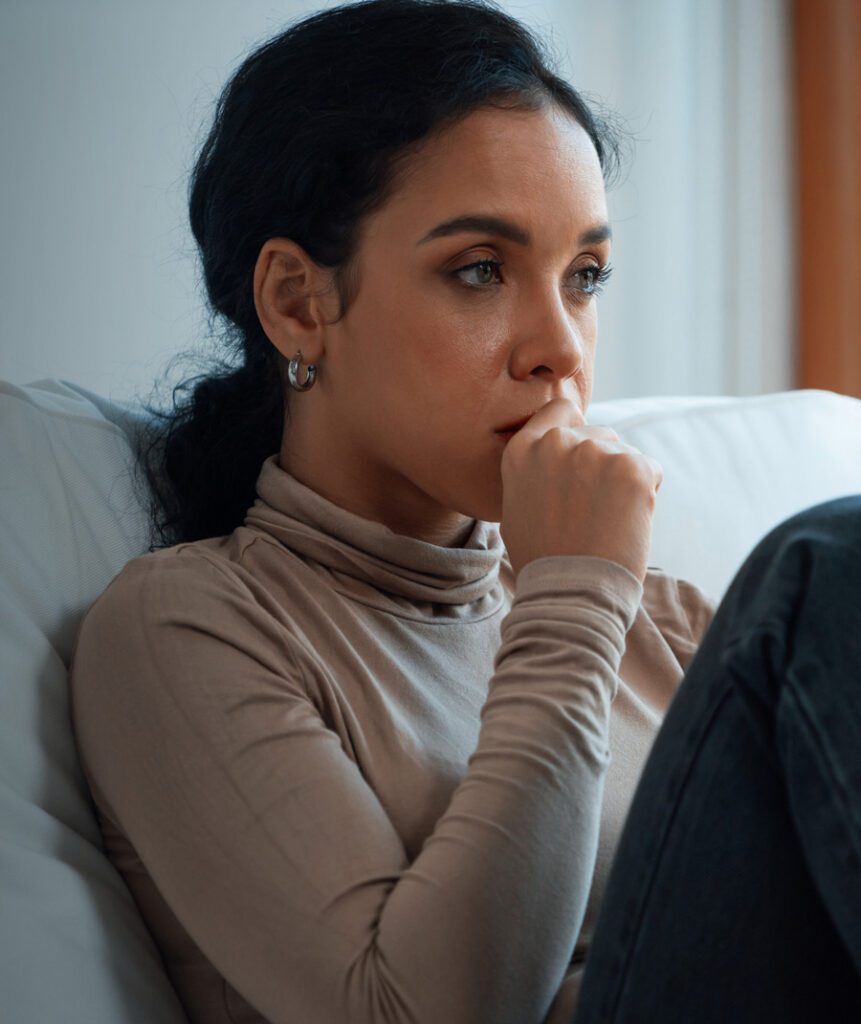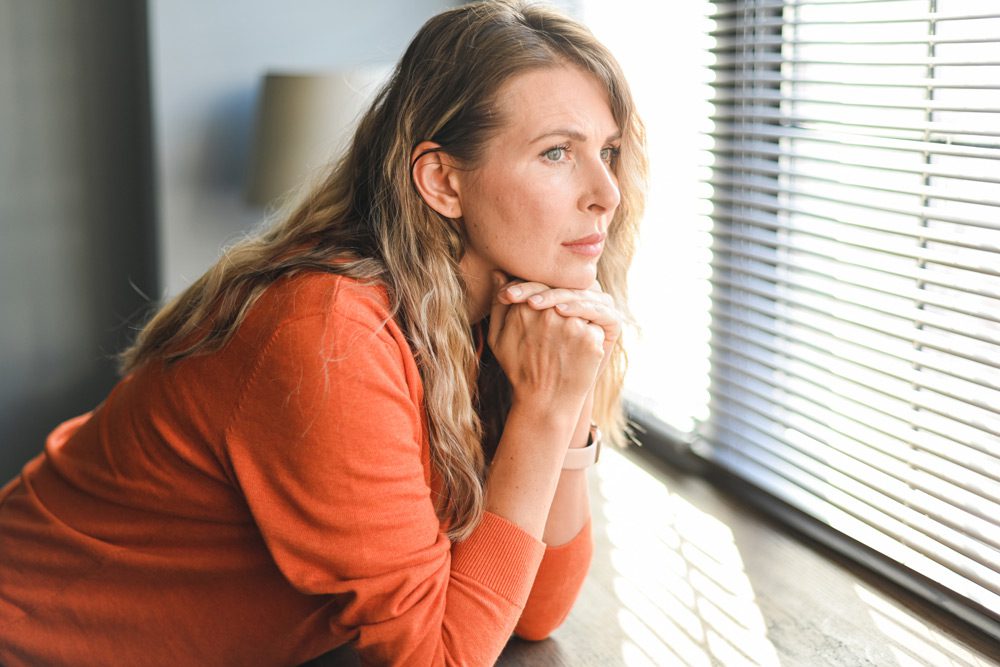Mental Health Treatment in San Antonio, Texas

Mental Health Treatment Options at Stone River Recovery Center
We understand that mental health is a crucial part of overall well-being. Our compassionate team is dedicated to providing personalized care for individuals facing mental health challenges, offering evidence-based treatments in a supportive and healing environment.
Whether you’re struggling with anxiety, depression, trauma, or other mental health disorders, we are here to help you regain balance and build a healthier, more fulfilling life. Below, we explore common mental health conditions and the specialized treatment options available at our center.
Explore Mental Health Disorders We Treat
Are you looking to take back your life?
(888) 235-3003
Treatment Paths
Our Programs
Post-Traumatic Stress Disorder (PTSD): Finding Peace After Trauma
Prevalence:
PTSD affects around 6% of U.S. adults at some point in their lives, with women being twice as likely as men to experience it.
What It Looks Like:
Imagine living with the constant fear that something terrible could happen at any moment. Even in a safe space, your brain remains on high alert, scanning for threats. The memories of trauma feel vivid and fresh, replaying through nightmares, flashbacks, or sudden intrusive thoughts that disrupt your day. You might avoid places or situations that remind you of the event—walking past a park, driving, or even watching a movie could feel unbearable. Over time, this avoidance can shrink your world, isolating you from people and activities you once loved.
How It May Impact Life:
- A mother who survived a car accident might avoid driving her kids to school, relying on others and feeling guilty for not “being strong enough.”
- A veteran with PTSD might sit with their back to the wall in every restaurant, scanning exits and mistrusting strangers, which makes outings with loved ones tense and short-lived.
- A professional may struggle with concentration because intrusive memories pull them away from tasks, causing work performance to suffer.
How Treatment Helps:
PTSD treatment focuses on helping the brain process trauma so it doesn’t feel like a current threat. Eye Movement Desensitization and Reprocessing (EMDR) uses guided eye movements to reprocess traumatic memories, reducing their emotional intensity. Therapies like Cognitive Behavioral Therapy (CBT) help individuals challenge unhelpful beliefs, such as “I’m weak because this happened to me.” Mindfulness techniques provide tools to ground yourself in the present moment.
A Note of Comfort:
PTSD doesn’t mean you’re broken. It’s your brain’s way of trying to protect you, and with the right care, you can reclaim a sense of safety and control in your life.
Anxiety Disorders: Breaking Free from Constant Worry
Prevalence:
Anxiety disorders are the most common mental health condition in the U.S., affecting nearly 19% of adults each year.

What It Looks Like:
Anxiety can show up in many ways. For some, it’s the relentless “what ifs” that spiral into worst-case scenarios—”What if I say something stupid in this meeting?” or “What if something bad happens to my family?” For others, it’s the physical symptoms: a racing heart, sweaty palms, or a stomach that feels like it’s tied in knots. Social situations can feel unbearable, as though everyone is watching and judging. Over time, anxiety may lead to avoidance—skipping that party, staying home from work, or declining invitations to things you’d normally enjoy.
How It May Impact Life:
- A college student might skip presentations, fearing embarrassment, and struggle to complete their degree.
- A parent might constantly check on their kids, feeling unable to relax even when the children are safe and sound.
- An employee might avoid asking for a raise, believing they’ll be seen as pushy or ungrateful, even when they’re deserving.
How Treatment Helps:
CBT teaches individuals to recognize and challenge the negative thought patterns that fuel anxiety. For example, instead of thinking, “I’ll embarrass myself,” you learn to reframe it as, “Everyone gets nervous; I can do this.” Exposure therapy helps you face fears gradually, proving to yourself that you can handle them. Relaxation techniques, like diaphragmatic breathing, ease the physical symptoms of anxiety, creating a sense of calm.
A Note of Comfort:
You don’t have to live in a constant state of worry. Anxiety is treatable, and learning to manage it can help you find joy and confidence in life again.
Obsessive-Compulsive Disorder (OCD): Breaking Free from Rituals
Prevalence:
OCD affects 1-2% of the population, often beginning in childhood or early adulthood.
What It Looks Like:
Living with OCD can feel like being trapped in an endless cycle. Intrusive thoughts—like fearing contamination or doubting whether the stove was turned off—feel unbearable, and the only relief seems to come from performing a ritual, like washing your hands for the tenth time or checking the stove repeatedly. At first, these actions might bring a temporary sense of calm, but the intrusive thoughts quickly return, demanding more time and energy. For some, OCD rituals are invisible, like mentally repeating a phrase to “undo” a bad thought, which can make the condition even harder to explain to others.
How It May Impact Life:
- A teacher with OCD might arrive at work late every day because they spent an hour ensuring their doors were locked before leaving home.
- A teenager might avoid touching doorknobs or shaking hands, fearing they’ll contaminate themselves or others.
- A parent might spend hours cleaning, unable to relax and play with their children until the house feels “just right.”
How Treatment Helps:
One of the most effective treatments for OCD is Exposure and Response Prevention (ERP), a type of CBT. ERP helps individuals face their fears in a gradual, controlled way while resisting the urge to perform compulsions. For example, someone afraid of germs might touch a doorknob without washing their hands immediately after. Over time, this process teaches the brain that the feared outcome is unlikely and manageable.
A Note of Comfort:
OCD is not about being “overly neat” or “perfectionist.” It’s a condition that can improve significantly with the right tools. You don’t have to fight it alone.
Major Depressive Disorder (MDD): Rediscovering Joy and Meaning
Prevalence:
Depression affects about 7% of U.S. adults annually, with women being nearly twice as likely as men to experience it.
What It Looks Like:
Depression isn’t just feeling sad—it’s a deep, unshakable emptiness. You might wake up exhausted, even after sleeping for hours, or find yourself avoiding friends because the effort of conversation feels too much. Things you once loved, like hobbies or outings, feel dull or meaningless. You may even feel guilty for not being “better,” creating a cycle of shame and self-criticism.
How It May Impact Life:
- A high-achieving professional might lose motivation, struggling to complete tasks or meet deadlines.
- A parent might feel disconnected from their children, blaming themselves for not being “present enough.”
- A student might isolate in their dorm room, skipping classes because they can’t find the energy to get up.
How Treatment Helps:
Therapies like CBT help reframe negative thoughts that fuel depression, such as “I’m a failure” or “Nothing will ever get better.” Behavioral activation encourages clients to re-engage in activities they’ve stopped enjoying, gradually reigniting their sense of purpose. Medication, when appropriate, can help regulate mood and energy levels.

A Note of Comfort:
Depression doesn’t mean you’re weak or broken—it’s a condition that can improve with time and support. There’s hope, even if you can’t see it yet.

Begin Your Healing Journey
At Stone River Recovery Center, we believe that healing is possible with the right support and treatment. If you or a loved one is struggling with a mental health disorder, you don’t have to face it alone.
Our team is here to provide compassionate care and evidence-based treatment to help you on your journey to recovery.
Contact us today to learn more about our programs and take the first step toward a healthier, more fulfilling life.